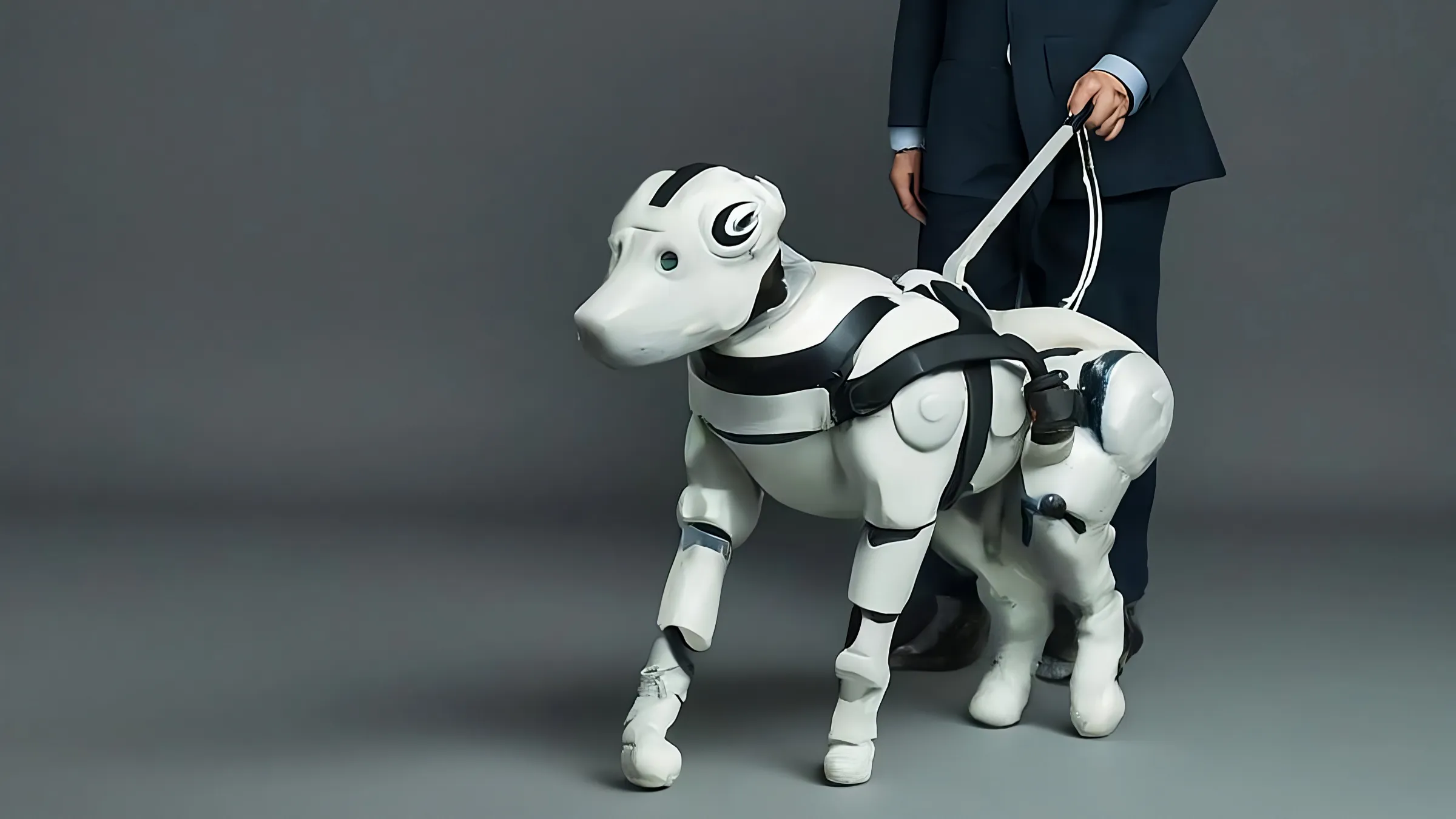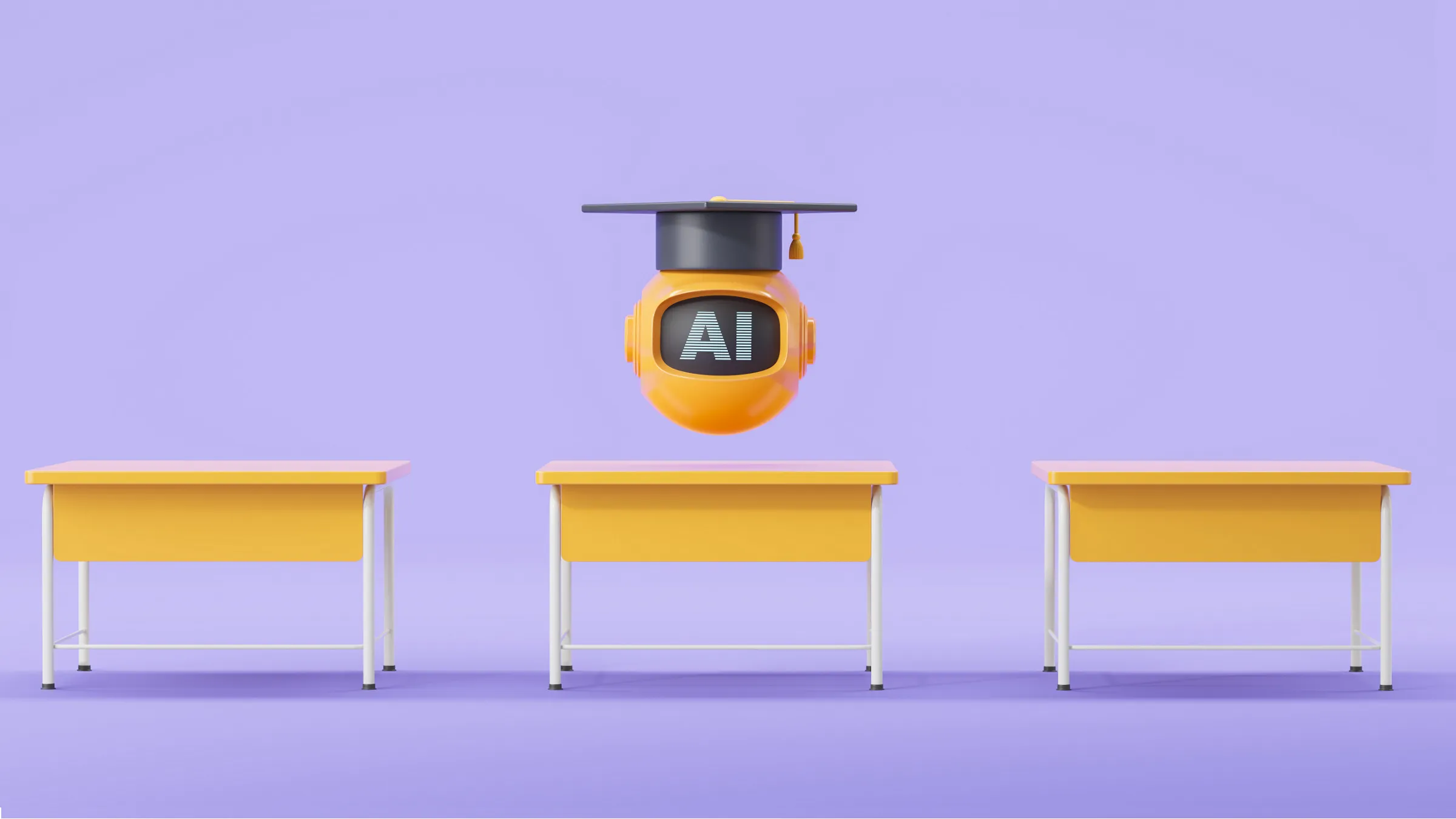Few jobs look more ripe for robotization than those of the guide dogs used by blind and sight-impaired people.
While the canny canines are great at helping their human owners navigate safely around people and obstacles in streets, buildings, and cities, the animals themselves are in extremely short supply, so few of those who need a guide dog actually get to own one. If their guidance task can be affordably and reliably automated, however, a clutch of robotics research labs around the world say many more people could get the help they need to lead more independent lives.
There are several reasons for the dearth of guide dogs. First, each costs more than $50,000 to breed, raise, and train, according to the Guide Dog Foundation, a Smithtown, NY-based charity. Also, it can take up to two years to train each animal, according to the foundation’s British counterpart, Guide Dogs U.K. “So it’s very expensive, and only half of the dogs that go into training actually graduate in the U.S.,” said Shiqi Zhang, a roboticist at Binghamton University in New York.
In addition, Zhang said, “The dogs’ work-lifetime is only six or seven years. As a result, only about 2% of visually impaired people who need one get to use a guide dog.”
It’s not just a Western problem: in China, cultural factors weigh against service dogs being allowed in many public places, such as workplaces and restaurants, says Gao Feng, head of robotics research at Jiao Tong University in Shanghai. As a result, he says, there are only a total of 400 guide dogs for the nation’s 20 million sight-loss sufferers. Growth in the number of guides is glacially slow: it has taken four years to double the 200 guide dogs deployed in China in 2020.
Paws for Thought
It all adds up to a very poor supply side situation, but it is one that has not gone unnoticed by governmental research funding agencies. The National Science Foundation (NSF) in the U.S., the Engineering and Physical Sciences Research Council (EPSRC) in the U.K., and the National Natural Science Foundation of China all are funding research into assistive robots to help the sight-impaired. They are funding development of guidance of varied types, with approaches spanning the gamut of robot form-factors from wheeled droids to four-legged or six-legged dog-like robots; some even have humanoids under consideration.
What Do Guide Dogs Do?
Guide Dogs U.K. cites the animal’s primary role as that of helping a blind or sight-impaired person, referred to as the dog’s ‘handler’, get around safely, with the dog acting like the “pilot” and the handler being the “navigator” who knows where they want to go. To do this, the dog is trained to walk from one point to another and guide the handler—who holds on to the animal’s harness, usually with the dog ahead of them and to their left-hand side—around any people or obstacles along the way. Crossing a road, the dog should walk in a straight line from one curb to the other while avoiding any obstacles, the organization said, with the dog obeying simple verbal directional instructions like “right,” “left,” and “forward.”
It is incorrect to think of the dog as somehow pulling or dragging the handler along, however. “It’s a common misunderstanding that the handler completely relies on the guide dog in navigation. In fact, it’s technically a collaborative decision-making process. The blind or visually impaired person does route planning and global localization, while the guide dog helps them avoid local obstacles,” said Zhang.
Such push-me-pull-you capabilities are eminently programmable into an adaptive robot and a smart harness, and because emerging large language models (LLMs) lend such robots the ability to obey much more extensive instructional vocabularies than a biological dog, teams worldwide have taken up the challenge of developing robot guide dogs. The use of LiDAR (laser-based radar) sensors and depth cameras allows those robots to avoid obstacles around them. Better still, the robots can out-perform actual dogs in one critical injury-avoiding aspect: warning the handler of overhead obstacles ahead.
Unlike wheeled robots, legged droids have the capability to climb and descend stairs, and three research teams have chosen that route: they include Zhang’s group at Binghamton University, which developed a four-legged dog robot with NSF funding, and Gao’s group at Shanghai Jiao Tong University, which has gone for a supposedly more-stable six-legged “dog,” backed by China’s National Natural Science Foundation.
Glasgow’s RoboGuide
However, another quadruped seems to have garnered most news media attention: the EPSRC-funded RoboGuide, a dog-like quadruped in development by Olaoluwa Popoola and colleagues at the University of Glasgow in the U.K. Affectionately known as Robbie, their machine is based on the $5,000 Unitree Go platform, one of the plethora of low-cost Chinese quadrupeds that have come to market since Boston Dynamics introduced the form factor with its $70,000 Spot robot in 2016.
The Glasgow team is training the robot’s simultaneous location and mapping (SLAM) and route-planning algorithms on indoor locations like museums, malls, and airports, but plans to move it to outdoor roles, where it can use GPS, once it is perfected indoors. “We use a combination of sensors to achieve safe navigation including LiDAR, depth-sensing cameras, and inertial measurement sensors,” said Popoola. “We use a combination of C++ and Python to implement our software, and have implemented it using ROS2, which is available to most modern-day robots,” giving them the option of porting it to different ROS2-compatible droids.
To Zhang’s point about the robot, just like a living guide dog, not tugging the handler along, Popoola said, “The robot moves in a specific direction based on verbal commands given to it by a user and when the robot moves, the harness handle, attached to the robot, also follows and provide tactile cues to the blind person to follow along.
“And ChatGPT APIs provide easy conversation between the robot and the user.”
Binghamtom’s Bot
It is LLMs’ powerful ability to allow robots to converse naturally with their handlers that Zhang believes will make a profound difference to the capabilities of the quadruped guide dog robot that he and his Binghamton colleagues are developing, which is based on yet another low-cost platform, the sub-$10,000 Lite-3 from Deep Robotics of China.
“A biological guide dog can usually understand maybe 15 or 20 very simple commands,” said Zhang, “but with large language models, the robot can understand much, much more, allowing the handler to use ‘open’ vocabulary. The human can say anything, and we can map it to the command the robot will understand.
“This really gives the human handler a much better communication channel with the robot, and the LLM can directly translate that to robot code, and that’s just amazing.”
One aspect of dog-like locomotion that has come up in Binghamton’s tests of its robot, which is configured similarly to the Glasgow droid, is that their joints and motors are “pretty noisy,” Zhang said. “When roboticists are doing quadruped locomotion work, we don’t really care too much about how much noise it’s producing. But it turned out that for visually impaired people, it’s important to keep the environment quiet so they can use echolocation to know where they are: they can tell from the sound they are hearing whether they are in a corridor, or a large room.” So noise reduction is now an aim of their project.
Shanghai Surprise
If four-legged robots have joint and motor noise problems, the six legs on the hexapod guide dog robot in development by Gao Feng and colleagues at Shanghai Jaio Tong University may have even more trouble keeping quiet. Gao is confident the higher leg count provides a much more stable configuration because even when three legs are lifted during locomotion, he says, there are still three legs on the ground providing “the most stable shape.”
Configured with sensors like the Glasgow and Binghamton robots, Shanghai Jaio Tong’s guide dog robot also has an LLM dedicated to voice command recognition and talking to the handler. “It currently has voice recognition accuracy of over 90% and a response speed of less than one second,” the university says on its website.
Already at the point of being trained outdoors, the Chinese robot is being taught to recognize traffic light signals, another way in which robots offer capabilities exceeding those of biological guide dogs (which are naturally color-blind). And with cheap components like motors and jointed legs readily replaceable when worn out, robots should easily be able to outlive their canine counterparts.
It’s too early to say what such assistive robots might end up costing the sight-loss organizations who will pay for them, said Zhang. “Prices are still decreasing so there’s no firm answer.”
While all three of the aforementioned robots boast a dog-like configuration, Zhang says there is no strong reason roboticists should actually be fixated on seeing-eye robots that resemble canines. The Glasgow team agrees, saying wheeled and humanoid robots could run their sensor suites and software equally well.
It’s a thought that one of the top researchers in the field, award-winning accessibility expert Chieko Asakawa, an IBM Fellow and a professor at Carnegie Mellon University in Pittsburgh, has already taken up. With her colleagues, Asakawa, who is herself blind, has developed a small, wheeled robot guide disguised as an airport carry-on suitcase.
Dubbed the AI Suitcase, the intelligent robot leads a visually impaired user, who holds a pull-up handle as if pushing a regular suitcase, around an airport, a mall, or other area. With a 3D sensor suite similar to those of the dog robots, the autonomous suitcase guides sight-impaired users to a destination they have provided via a speech interface, while dodging obstacles.
The basic idea is that the handle of the suitcase does the same tactile feedback job for the user that the harness does with a dog-like robot. Asakawa reckons the format outperforms a dog-like one: “In terms of bringing a product to market quickly, our suitcase-type robot has the advantage. This is because it can blend naturally into its surroundings, even when walking in the city, and it is easier to maintain compared to dog-shaped robots.”
The idea of replacing guide dogs with robots could be regarded as solutionism–the notion that all problems can be solved with technology, and especially recently, by AI. Yet that is not borne out by the reactions of people with sight loss who have trialed early versions of the Glasgow, Binghamton, or Shanghai robots: all appeared to genuinely appreciate them.
Kyle Somerville, a participant with sight loss in a trial of the Glasgow RoboGuide organized by local advocacy organizations the Forth Valley Sensory Centre and the Scottish arm of the Royal National Institute for Blind People, said, “100%, I would use this in the future. And a lot of people I know would want to try this and would definitely use it.”
Will such faith in the technology continue as it is refined and comes to market? We’ll soon know: blind and partially-sighted visitors to Expo 2025 in Osaka, Japan will get the chance to try out Asakawa’s invention. “Our team plans to operate the AI Suitcase every day at the Expo so that anyone can experience them. We hope to promote social understanding of this technology through this,” she said.
Further Reading
- Cai, S., Ram, A., Gou, Z., et al.
Navigating Real-World Challenges: A Quadruped Robot Guiding System for Visually Impaired People in Diverse Environments. In Proc. CHI’24, May 11th 2024. https://dl.acm.org/doi/10.1145/3613904.3642227 - Asakawa, C.
Interaction Techniques with a Navigation Robot for the Visually Impaired, Keynote speech at HRI’23, March 13th 2023. https://humanrobotinteraction.org/2023/keynote-speakers/index.html - Asakawa, C., Guerreiro, J., et al.
Cabot: Designing and evaluating an autonomous navigation robot for blind people. In Proc. ACM ASSETS’19, October 24th 2019. https://doi.org/10.1145/3308561.3353771
- Interaction Techniques with a Navigation Robot for the Visually Impaired, Summary of Chieko Asakawa’s Keynote at HRI’23; https://www.youtube.com/watch?v=Xwxdne8gRIM
- Paw-sitive Reception for Robot Guide Dog Could Lead To New Assistive Technologies, University of Glasgow, February 2024; https://www.youtube.com/watch?v=CLcQTM127YU




Join the Discussion (0)
Become a Member or Sign In to Post a Comment